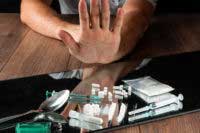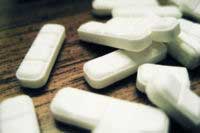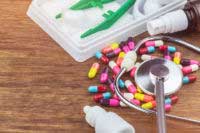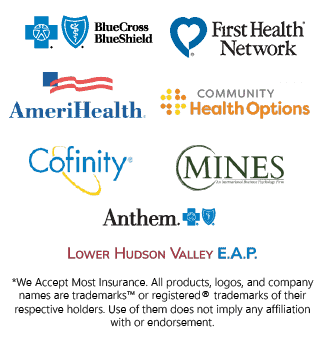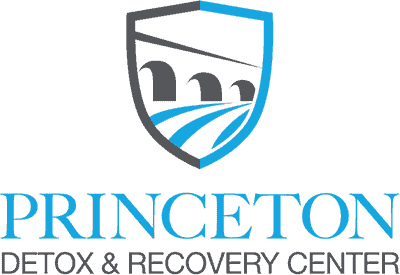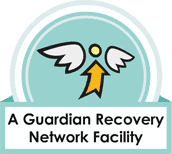Detox From
Stimulant Drugs
Stimulant drug withdrawal is rarely life-threatening, but the physical and psychological symptoms can be severely uncomfortable when left untreated. At Princeton Detox & Recovery Center we effectively treat all symptoms associated with stimulant withdrawal, regardless of the type of stimulant drug being misused. If you or someone you love has been using an illicit stimulant like methamphetamine or cocaine or a prescription stimulant like Adderall or Ritalin, we are available to help. Our individualized detox program focuses on treating withdrawal symptoms as soon as they develop while adequately preparing our clients to take the next appropriate step on their personal recovery journeys.
[toc]
Stimulant drug misuse has been on the rise throughout the U.S. This is particularly true when it comes to prescription stimulants, a type of medication most commonly prescribed for the treatment of Attention Deficit Hyperactivity Disorder (or ADHD). According to a study published by the National Institute on Drug Abuse, around 16 million American adults use prescription stimulants, 5 million misused a prescription stimulant at least once, and 0.4 million have been suffering from a prescription stimulant use disorder. Rates of illicit stimulant use are also high. NIDA reports that 2.6 million Americans over the age of 12 used methamphetamine in the past 12 months, and 1.5 million people suffered from a diagnosable methamphetamine use disorder in 2019. During the same year, 5.2 million Americans over the age of 12 reported using cocaine within the past 12 months, and 1.3 million people suffered from a cocaine use disorder. If you or someone you love has been struggling with a stimulant use disorder of any severity, Princeton Detox & Recovery Center is available to help. Contact us today to learn more.
What is a Stimulant Drug?
Stimulant drugs are a class of illegal and prescription substances that essentially speed up messages traveling between the brain and the body. Regardless of the type of stimulant being used, the effects will include increased alertness and energy levels. Taking large doses of any stimulant drug can result in adverse side effects including headaches, stomach cramping, rapid heart rate, anxiety, panic attacks, and paranoia. Stimulants drugs can be broken down into several distinct categories:
- Illegal stimulant drugs (methamphetamine, cocaine).
- Prescription stimulant drugs (Adderall, Ritalin, Concerta).
- Nicotine.
- Caffeine.
Illegal stimulants and prescription stimulants have a high potential for misuse. While nicotine is one of the most widely misused and addictive substances in the world, those who are suffering from nicotine addiction can often quit without intensive professional intervention. On the other hand, an individual who has been misusing an illegal stimulant drug or a prescription stimulant would likely benefit from a multi-staged recovery program, beginning with medically monitored detox.
We Are Here For You
Let Us Help You Heal
Our Drug detoxification experience is second to none.
Learn how we can help by speaking with one of our Treatment Advisors today.
Commonly Abused Stimulants
Below is a list of commonly misused stimulants. If you or someone close to you has been misusing any of the chemical substances listed, seeking some degree of professional help is a good idea. However, it is important to note that the best treatment options vary from case-to-case. Addiction treatment is not a one-size-fits-all solution. To learn more about our individualized treatment program, contact us today.
1. Amphetamines
The Alcohol and Drug Foundation states, “Some types of amphetamines are prescribed by doctors to treat conditions such as attention deficit hyperactivity disorder (ADHD) and narcolepsy (where a person has an uncontrollable urge to sleep). Amphetamines have also been used to treat Parkinson’s disease. Other types of amphetamines, such as speed, are produced and sold illegally. Amphetamines have also been taken as performance enhancement drugs. The most potent form is crystal methamphetamine (ice).” In addition to illegal amphetamines, prescription amphetamines like Adderall and Ritalin have an extremely high potential for misuse.
2. Cocaine
Cocaine is a highly addictive and illegal stimulant drug, naturally derived from the coca plant of South America and most widely available in a white, powdered form and used nasally, or snorted. The National Institute on Drug Abuse states, “Cocaine increases levels of the natural chemical messenger dopamine in brain circuits related to the control of movement and reward.” Short-term effects of cocaine use include increased energy and alertness, irritability, anxiety, and paranoia. Long-term effects of cocaine use include loss of smell, chronic nosebleeds, increased risk of infection, and the development of a cocaine use disorder.
3. Crack
Crack, also known as crack cocaine, is a freebase version of powdered cocaine that is typically smoked with a small glass pipe. Because crack is more accessible and affordable than powdered cocaine, it is more commonly used by those in lower income brackets. Crack first emerged as a drug of abuse in the mid-1980s and is extremely habit-forming because of its potency and the short-lived high it produces. Crack is typically sold in a crystalline rock form, and is either off-white or yellow in color. The U.S. Department of Justice Reports, “In addition to the usual risks associated with cocaine use (constricted blood vessels; increased temperature, heart rate, and blood pressure; and risk of cardiac arrest and seizure), crack users may experience acute respiratory problems, including coughing, shortness of breath, and lung trauma and bleeding. Crack cocaine smoking also can cause aggressive and paranoid behavior.”
4. Methamphetamine
Methamphetamine is a highly addictive stimulant drug that affects the central nervous system. It is typically found in the form of a white, odorless, bitter-tasting crystalline powder that can be easily dissolved in water. The U.S. Drug Enforcement Administration has classified methamphetamine as a Schedule II chemical substance, meaning it has a very high potential for misuse and dependence. Methamphetamine differs from amphetamine in that significantly greater amounts of the drug get into the brain at much smaller doses, making it a more potent and addictive stimulant.
5. MDMA (Ecstasy)
MDMA, also known as molly or ecstasy, is a synthetic drug that acts as a stimulant and a hallucinogen. NIDA reports that the drug “produces an energizing effect, distortions in time and perception, and enhanced enjoyment from sensory experiences.” It has also been discovered that pure MDMA is a rare commodity. “Adulterants found in ecstasy tablets purchased on the street have included methamphetamine, the anesthetic ketamine, caffeine, the diet drug ephedrine, the over-the-counter cough suppressant dextromethorphan, heroin, phencyclidine (PCP), and cocaine.” MDMA can be psychologically addictive, but ecstasy use disorders are somewhat uncommon.
6. Bath Salts
Bath Salts are a type of synthetic drug (synthetic cathinone) that has been classified as a psychoactive stimulant drug. It has no known medical use and was developed to mimic the effects of an existing chemical substance.
Signs & Symptoms of Stimulant Use & Dependence
Individuals who have been struggling with stimulant drug addiction will typically exhibit a wide range of behavioral, psychological and physical symptoms. If you believe you or someone close to you might be struggling with a stimulant drug addiction of any type or severity, there are several signs and symptoms to look for.
The Diagnostic and Statistical Manual of Mental Disorders, 5th Edition (DSM-V) outlines a list of diagnostic criteria associated with stimulant drug addiction. If you answer “yes” to two or more of the following questions, entering into a treatment program is likely a good idea. However, it is important to note that symptoms of stimulant use disorders vary in severity, and a multi-staged program of recovery is not an ideal option for everyone. Contact us today to learn more about what type of treatment program will best meet your unique, personal needs.
The DSM-V diagnostic criteria for a stimulant drug use disorder are outlined below. Ask yourself the following questions when attempting to determine whether or not professional treatment is right for you.
- Do you often use more of the stimulant drug than intended for a longer period of time than intended?
- Have you attempted to cut back on the amount of the stimulant drug you take to find yourself unable to cut back or quit for an extended period of time?
- Do you spend a significant amount of time using your drug of choice and recovering from its effects?
- Are you often consumed by thoughts of using stimulant drugs, or do you experience cravings for your drug of choice throughout the day?
- Does using stimulant drugs or recovering from the effects of excessive stimulant drug use affect your ability to take care of personal responsibilities and obligations?
- Has stimulant drug use caused issues and interpersonal problems between you and your family and/or friends?
- Have you given up activities you previously enjoyed because of your stimulant drug use?
- Have you experienced an increase in risk-taking activities as a result of your stimulant drug use, like combining stimulant drugs with other chemical substances, driving while under the influence of stimulant drugs, or obtaining a prescription stimulant illegally (without a valid prescription)?
- Have you experienced worsening symptoms of a physical or mental health problem as a direct result of your stimulant drug use?
- Have you developed a physical tolerance, meaning a larger amount of the drug is required in order for the desired effects to be achieved?
- Do you experience withdrawal symptoms when you stop using stimulant drugs abruptly?
Stimulant Withdrawal
Unlike other chemical substances, the withdrawal symptoms associated with stimulant drugs are largely psychological in nature. They might include paranoia, severe anxiety, or depressed mood. Physical symptoms associated with stimulant withdrawal are typically easily managed, and might include insomnia, fatigue, headaches, and increased appetite. Most stimulant drugs have a short half-life, meaning that the withdrawal effects can be felt as quickly as 90 minutes after the last dose is taken. Individuals who have been struggling with a stimulant use disorder benefit from entering into a medical detox program immediately upon ceased use, in order for withdrawal symptoms to begin being treated as quickly as they begin and in order to prevent potential relapse.
Stimulant Detox
The duration of stimulant detox depends on several factors, including:
- The type of stimulant drug being used.
- The amount of the substance being taken on a daily basis.
- Whether or not the substance was being combined with another drug or with alcohol.
- The presence of any underlying or co-occurring condition.
In most cases, stimulant detox will last for between 3 and 7 days.
Ready To Begin Your Detox?
Don’t let addiction control your life.
Call us today and let’s get you started on the path to a better you.
Treatment Options
The best treatment options for stimulant drug addiction depend on your unique case. When it comes to professional treatment, several factors should be taken into close consideration, including:
- The severity of the stimulant drug use disorder. If the stimulant drug use disorder is moderate or severe, entering into a long-term treatment program is likely a good idea.
- The potential of withdrawal symptoms. Because the physical and psychological symptoms associated with stimulant drug withdrawal can be unpredictable, it is important for anyone who has been suffering from stimulant drug addiction to enter into a professional medical detox program for short-term monitoring.
- The presence of any co-occurring disorders. If a person has been simultaneously suffering from a stimulant drug use disorder and a mental illness, entering into a longer term dual diagnosis treatment program might be necessary.
In most cases, it is recommended that a person who has been suffering from a diagnosable stimulant drug use disorder of any severity enter into a multi-staged treatment program, which begins with medical detox and transitions into the next appropriate level of care. Depending on your personal needs, you might choose to follow detox with an extended stay in an inpatient treatment center, or continue with a more flexible and less time-demanding option, like outpatient treatment.
Treatment options include:
- Medical detox. In medical detox a person undergoes a safe, pain-free stimulant drug withdrawal under the close supervision of a team of medical professionals.
- Residential inpatient treatment. This is the most intensive treatment option; residential programs typically last for between 30 and 90 days depending on the needs of the individual. Most inpatient programs incorporate individual, group, and family therapy, 12 Step program education and involvement, and holistic treatment modalities to provide a comprehensive treatment experience.
- Partial hospitalization. This level of care is a step down from inpatient treatment, and includes full days of intensive therapeutic care (usually 7 days a week) with the freedom to return home in the evenings.
- Intensive outpatient treatment. Also known as IOP, this level of care is ideal for those who have completed a short stay in medical detox and are looking for a flexible treatment option with an ample amount of personal freedom. IOP is ideal for those with a mild or moderate stimulant drug use disorder and no co-occurring issues.
- Outpatient treatment. Outpatient treatment, or OP, is one more step down from IOP, with group sessions typically only meeting between 2 or 3 times a week for several hours.
- Aftercare. Because stimulant drug addiction is a chronic health condition, ongoing treatment is necessary to longer term recovery. Most aftercare plans consist of ongoing involvement in a peer support group (like Alcoholics Anonymous or Recovery Dharma) and ongoing individual therapy.
- 12 Step program involvement. While many recovering individuals choose to participate in a 12 Step recovery program like Alcoholics Anonymous or Narcotics Anonymous, there are numerous other options available. Peer support is often an important part of aftercare.
- Individual therapy and/or ongoing psychiatric services. Because many individuals who suffer from stimulant drug addiction simultaneously struggle with co-occurring issues, ongoing therapy and/or psychiatric care often come recommended.
If you or someone you love has been suffering from a stimulant drug use disorder of any type or severity, Princeton Detox & Recovery Center is available to help. Our medically monitored detox program was designed with client comfort in mind. We provide our clients with a safe, pain-free withdrawal in a therapeutic setting, actively preparing them to take the next appropriate step on their personal recovery journeys. As soon as you make the decision to reach out for help you will be put in contact with one of our experienced and compassionate Treatment Advisors, who will help you determine whether or not our stimulant drug detox program is right for you. If we believe our program is a good fit, we will proceed with a brief pre-assessment and a free, no obligation health insurance benefit check. We accept coverage from most major national health insurance providers as well as most regional providers throughout New Jersey and surrounding areas. To learn more about stimulant drug addiction and treatment or to begin your own personal journey of addiction recovery, contact us today. `
Stimulant FAQs

Reviewed for accuracy by:
Amanda Hilzer M.Ed, CAADC, IADAC, ICCS, LCADC, CCS
Amanda graduated from Lehigh University with both an undergraduate degree in Psychology and a Master’s of Education degree in Counseling Psychology and has worked in the field of substance use disorder treatment and mental health treatment as a counselor and as a clinical manager for over 14 years.



